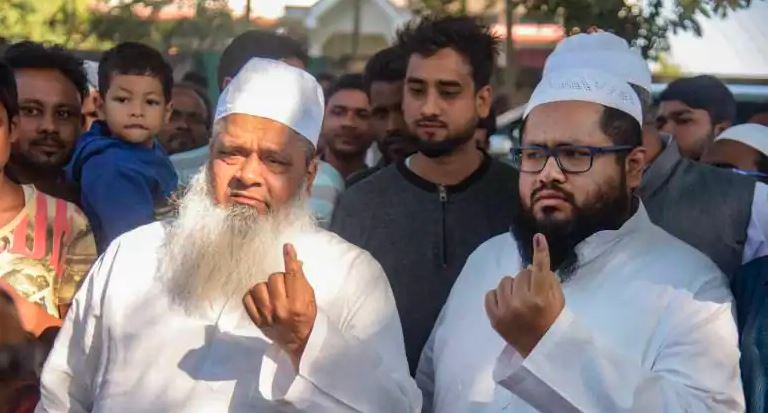While the nation focuses on TMC’s victory in West Bengal and the resultant mass violence being seen on the streets of the state, including targeted killings and harassment of BJP workers and supporters, the situation in Assam too is no less alarming. In Assam, no post-poll violence has been reported. However, the number of minority leaders who have made their way into the State Assembly serves as a testament to the fact that the demographic invasion of Assam is very well underway, and must be tackled in the foreseeable future if the vibrant culture of the state is to be preserved.
The BJP and its allies have got none of their Muslim candidates elected to the state assembly. The BJP had fielded eight Muslim candidates, but all of them lost. The opposition bench, meanwhile, has 31 Muslim MLAs who will be representing Muslim-dominated constituencies over the next five years. It must be remembered that the Mahajot, which is an alliance of Congress, AIUDF and eight other parties in Assam have managed to win only about 50 seats this election. Effectively, out of 50 opposition MLAs, 31 are Muslims.
But that is not the end of it all. In fact, out of the remaining 18 MLAs among the opposition bench, 10 individuals have been elected from constituencies where Muslims have around 35 to 40 per cent vote share. That effectively means that the Muslim community has come to garner a sway on over 41 to 46 constituencies in the state of Assam, out of the total 126 that the Assembly is comprised of. The number of Muslim MLAs this time around is the second highest after the controversial 1983 elections held during the peak of the Assam Agitation. The agitating organisations had boycotted the polls that year, with seven candidates declared winners unopposed and less than 20% of voters turning up in several constituencies.
Ominous sign in #Assam, out of the 50 opposition MLA, 32 are Muslim MLA…… and out of the rest 18 MLA who won, minimum 10 constituency do have 35 to 45 percent Muslim influence, where Congress and AIUDF put united candidates. Full credit goes to Congress for present state. pic.twitter.com/Btcwzoyg43
— Oxomiya Jiyori 🇮🇳(Modi’s Family) (@SouleFacts) May 3, 2021
The 1983 elections were held in unprecedented times and were boycotted by parties that mattered. It was a cakewalk for the minority community to send 33 MLAs to the state assembly. However, the elections of 2021 have been conducted in absolutely normal circumstances, with every party fighting hard to win seats. Despite the fiercely fought battle, if the opposition benches come to be comprised of such a large number of Muslim representatives, it is quite telling of the kind of impending demographic disaster which stares Assam in the face.
The fear of illegal Bangladeshi infiltrators invading Assam and establishing their hegemony of the land of the Assamese was first felt when in 1978, 27 Muslims were elected to the state assembly. Nationalist groups in Assam realised that to be an alarming development, considering the fact that only in 1972, the total number of Muslim candidates in the assembly was 21. This uptick in the minority representatives’ numbers was a major trigger of the Assam Agitation.
Assam has a nearly 40 per cent Muslim population – latest statistics show that the number has grown by five to six per cent from 2011. That makes Assam the second-most Muslim populated state after Jammu and Kashmir. That, indeed, should be a cause of worry for all Indians. Muslims are a majority in eleven districts out of thirty-three in Assam. Muslims form the majority in Dhubri, Bongaigaon, Goalpara, Barpeta, Morigaon, South Salmara district, Hojai, Nagaon, Darrang, Karimganj and Hailakandi. The highest concentration of the community has been found to be in Cachar, Nalbari, Kamrup, Kokrajhar and Chirang.
A five per cent increase in the Muslim population of a state in a matter of 10 years, simply put, is unprecedented. There is an urgent need to contain the demographic war being waged in Assam – or the state will be lost forever.
